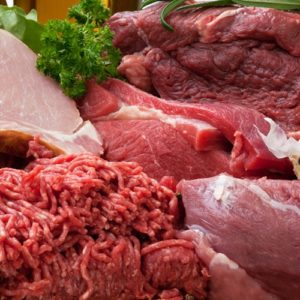
At the store
The Food and Drug Administration supports labeling meats and eggs with a “Safe Food Handling” sticker that tells what the proper temperature for cooking and storage is as well as an expiration date for each product. This is incredibly helpful to ensuring that food poisoning from undercooked or old items does not occur. Look for the label when you are at a supermarket. Always inspect a cut of meat before purchasing it. If the packaging is torn or the meat has any odd discoloration or odor be sure to give it to a store employee to dispose of.
Always keep raw meat separate
Cross-contamination occurs when bacteria spreads from one food to another. Use two cutting boards, one for meat and one for other items to prevent the exchange of bacteria from one item to the next. It is also important to use a different knife for each food. Do not place a cooked food item on a plate or cutting board where raw meat was previously. Wash your hands, utensils and cutting board between uses to ensure that any bacteria is washed away.
Cook meat to the proper temperature
Follow the Safe Food Handling label to know what temperature to cook your meat to. There are also plenty of handy guides that can be used to know what temperature and rest time to use for your rack of ribs or leg of lamb. Tape one to the inside of a cabinet where you will have easy access to it. This is something you will frequently reference throughout your Austin culinary arts career.
Pop up timers are not just for turkeys. Use a thermometer to establish what temperature the inside of your meat is. Thermometers come in many varieties, from a metal one that you stick into the middle of the meat to fancy tech-savvy ones that connect to an app on your phone and tell you when the meat is ready. Choose one that works for you and be sure to wash it thoroughly after each use.
Pay attention to the rest time
Most meat cooking guides include a resting time if it is necessary. The resting time is not how long it takes for the meat to cool so that you can eat it. Even after you remove meat from the oven or stove top it still cooks for several minutes afterwards. That time, known as a resting time, can be crucial for killing harmful bacteria that may still be lingering. Be sure any household pets are out of the way and do not have access to your freshly cooked meat or they may take a nibble, causing them to get sick and potentially contaminating the meat.



